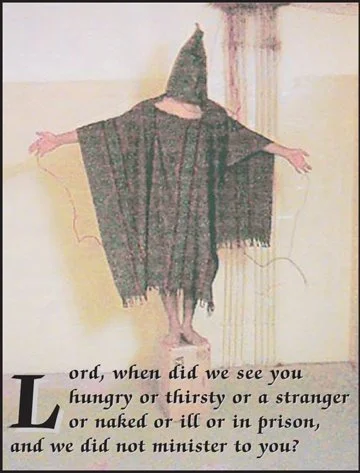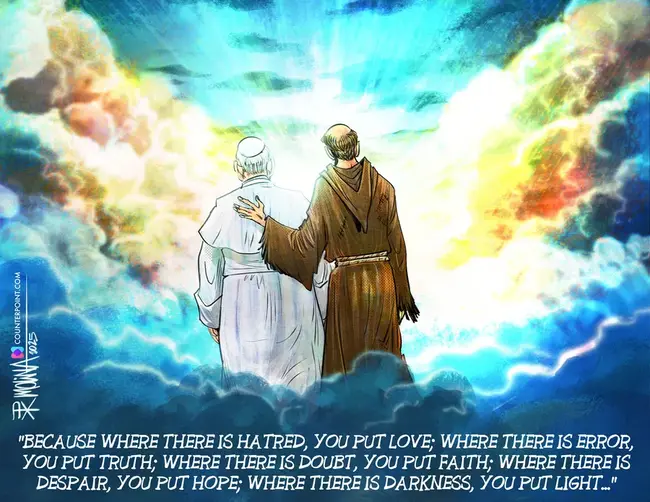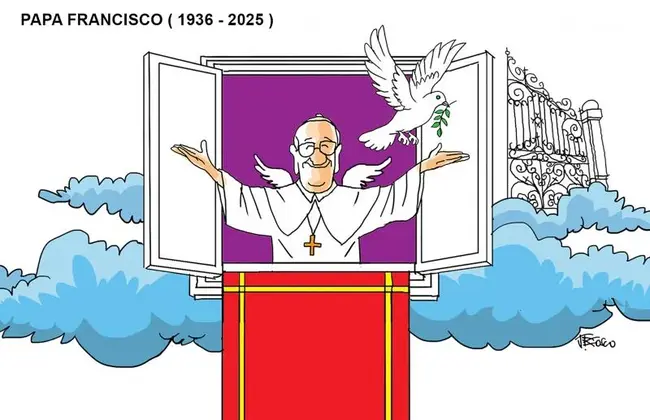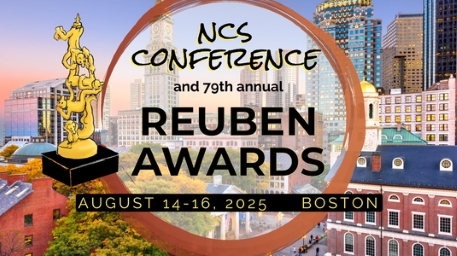CSotD: Jube, Domne, Benedicere*
Skip to commentsThere are so many cartoons about the death of Pope Francis that I had to make decisions, one of which was to lead off with a Nick Anderson piece that he did for Easter, before the Pope died. It’s one that could have been done any Easter, because we have become very good at giving lip service to religion without following through in our daily lives.
In 1936, Francis Yeats-Brown wrote of his spiritual quest in Lancer at Large, the sequel to Lives of a Bengal Lancer, and observed that India as it existed at the time was not so different from the world in which the Upanishads and other sacred Hindu texts were written.
By contrast, he said, European Christians had no intimate knowledge of deserts and oases and other things in the Bible’s setting, which leads to a greater spiritual disconnect:
There is a deep insincerity running through modern Christendom, because the average man and woman who goes to church no longer accepts the Church’s teachings on Heaven, Hell, the reality of the Devil, or the terror of the Wrath of God. We repeat the rich, rolling phrases of the prophets of Palestine, without giving them literal credence and hence we tend to similar hyperbole in our worldly affairs. A civilisation that has lost its Faith, cannot keep faith in anything.
Yeats-Brown was one of many disaffected WWI veterans — the Lost Generation — but not the only generation to feel let down by its spiritual leaders. I’ll confess to have actively disliked Paul VI for his failure to provide useful guidance in the ’60s, and to have been generally disappointed ever since.
But although I’m long gone from the Church, I admired Francis for his ability to step up to the leadership role, and Molina is right to associate him with the saint whose name he chose and whose prayer he followed.
Could he have done more? Perhaps. But he did more than anyone since John XXIII, and that’s a high standard.
It makes me appreciate Bennett’s tribute, because arranging the rosary as a heart is a reminder of its intended use as a tool of meditation, like a prayer wheel or the similar sacramentals of other faiths, and a reminder that for all the people like the fellow in the Nick Anderson cartoon who don’t get it, there are people like the pair in Pedro Molina’s cartoon who do.
I’ve often observed that English-language political cartoonists are storytellers while cartoonists of other nations tend towards metaphors, and this is the type of moment when metaphors can say more. You don’t have to read Portuguese to appreciate Gargalo’s message.
Which makes a good time for me to point out that simply drawing a caricature is not the same as making a statement. There are more realistic portraits of the Pope than this floating around, but Gargalo draws his interior self, not just his face.
While, in an example of telling a story rather than offering a metaphor, Slyngstad illustrates a quote to comment on how Francis engaged the immediate world.
There has been a flood of wiseassery about the fact that JD Vance met with the pope a few hours before his death, but Slyngstad skips the cheap jokes and points out the pope’s specific statement on migrants, which is hardly the only time he spoke up, not just in favor of migrant rights, but those of LGBTQ+ people, in favor of vaccines and in other ways by which he let his light shine into the gathering darkness.
Milbrath also quotes him, but adds the expected response his openness and kindness was likely to get in a closed and hostile world.
I’d recommend skipping the jokes about JD Vance and focusing on the real, needed contrast in leadership that Francis modeled.
There are a lot of cartoons featuring doves, but I particularly like Koterba’s imagery because, rather than showing Francis borne up by a dove, he shows him walking through life and leaving a stream of doves behind him. That should be everyone’s goal, but few can achieve it.
Brazilian cartoonist J. Bosco also uses a dove, showing him freed by a man who opens windows. Francis made the Church less mystic and majesterial, and more approachable, and that’s not just a matter of letting people in but also of letting things out.
“After you.”
“Go ahead. I still have work to do here. Tell my father that I’m going to be a little late.”
Again, did Francis accomplish everything he might have? Du Bus adds dialogue to take it beyond a simplistic statement about his humility and make it more about an ongoing, universal vocation.
There have been several cartoons of him in a long line at the Pearly Gates, declining to push ahead of others, but Morland suggests Francis would forego all the hoopla and just slip in through the service entrance, as any dutiful employee would.
I’m sure we’ll test how well the Vatican keeps his funeral as plain as he might have wanted, and, for that matter, how long they wait before proclaiming him a saint, which sparks my cynicism as a recovering Catholic, since I believe it’s less important to venerate him than it is to imitate him.
Ah, but it’s easier to pray for miracles than it is to work to make them happen.
As Custodio suggests, there seems to be a tradition of following a liberal pope with a conservative and vice-versa, which gave us Paul to JPII to Benedict to Francis, excluding JPI who only stopped by for a cup of coffee.
There is the factor of Francis having somewhat greased the skids by encouraging, and sometimes directing, the retirement of certain cardinals. There are still plenty of very conservative Catholics who would like to go back to a pre-Vatican-II church of hair-shirts and discipline, but perhaps they have less representation in today’s College of Cardinals than in the past.
It would be nice if the conclave chose someone who would advance the central message rather than repress it, but that message never changes.

(*Please, sir, give your blessing)













Comments 18